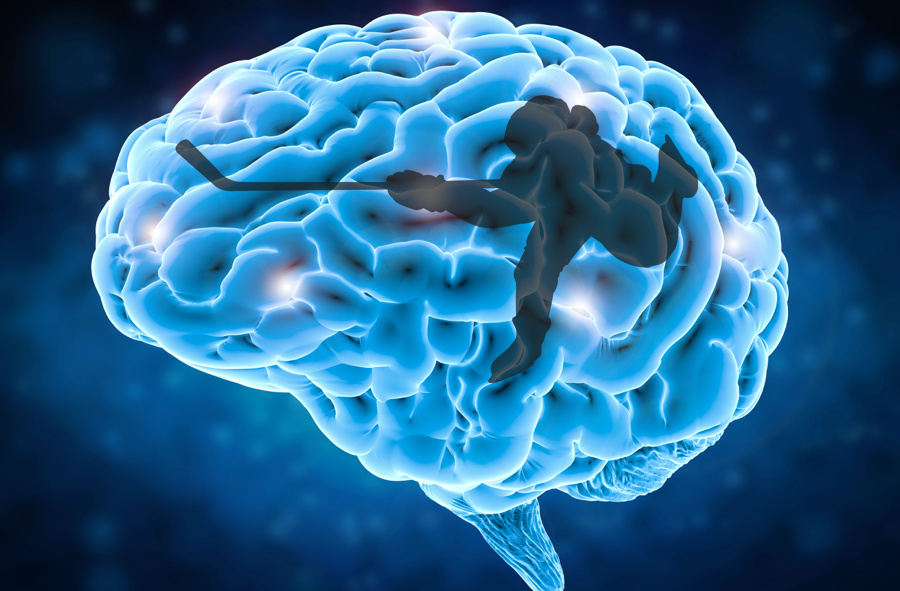Using Mental Imagery To Help Treat Injuries

Ashleigh Atkinson obtained her Bachelors of Physical Education from Brock University, followed by her Masters of Human Kinetics from the University of Windsor. Ashleigh works as a health promotion specialist, runs a successful online coaching business with her husband, and is a national level figure competitor.

Using Mental Imagery To Help Treat Injuries
Ashleigh Atkinson, MHK
As an athlete, injuries are an unfortunate side effect of pushing your physical limits - aches, pains, strains, or possibly worse. While bodybuilding doesn’t have the risk of collision or other violent injuries, the factor of putting your muscles and joints under the stress of heavy loads has the potential to do some serious damage. When an injury happens, how you respond and react physically and mentally, can directly impact how long you’re sidelined – and we know you want to get back to work ASAP.
As an athlete, you’re likely in tune with your body – but can you say the same about your mind? The mental realm of competitive sports is vast, and learning to master your brain should be part of your training. In the unfortunate case that you suffer an injury, having an arsenal of mental skills can help immensely.
Mental Imagery 101:
 Imagery is the act of mentally picturing yourself performing a task, using as many senses as possible. For example, a hockey player may use imagery to perfect their slap shot, where they can feel the muscles activating as they draw their stick back, hear the crowd cheering, see the goalie in the net, and smell the scent of the arena. Sport psychologists have used imagery among athletes for numerous outcomes – controlling stress, perfecting techniques, hitting PRs, and even injury recovery.
Imagery is the act of mentally picturing yourself performing a task, using as many senses as possible. For example, a hockey player may use imagery to perfect their slap shot, where they can feel the muscles activating as they draw their stick back, hear the crowd cheering, see the goalie in the net, and smell the scent of the arena. Sport psychologists have used imagery among athletes for numerous outcomes – controlling stress, perfecting techniques, hitting PRs, and even injury recovery.
Mind Over Muscle:
 While this might seem too out-of-the-box for some athletes, it has been proven to work. The practice of using mental imagery during injury rehab can increase feelings of control over the recovery, improve range of motion at the injury site, and can even shorten the process. Another bonus of using imagery during rehab is its ability to increase relaxation in the body, which aids in pain management.
While this might seem too out-of-the-box for some athletes, it has been proven to work. The practice of using mental imagery during injury rehab can increase feelings of control over the recovery, improve range of motion at the injury site, and can even shorten the process. Another bonus of using imagery during rehab is its ability to increase relaxation in the body, which aids in pain management.
When applying imagery to recovery, an athlete can use it to picture themselves moving normally and performing their sport again. Or, they can make it internal and envision the injury repairing itself – a broken bone rebuilding, or inflammation draining and swelling going down. As an indirect component to rehab, they may use imagery to stay calm if they’re upset and frustrated about the injury.
Don’t Be Afraid To Train:
Now, you’ve done the work and have been cleared by your doctor or other health care provider to train again, many athletes fear that they will injury themselves again. It’s natural to be worried about re-injuring yourself or pushing too hard too soon but you must overcome this. While you need to be more aware of the injury and pay attention to warning signs, stressing about it can be detrimental to your success. Stress causes the muscles to tense up, which can reduce your range of motion and natural biomechanics which will actually increase the risk of injury – whether it’s at the same site or a new one. If you don’t feel 100% ready to return to normal training, try using lighter weight but establishing a better muscle contraction with a smooth range of motion, while keeping the mind as relaxed as possible.
While everyone plans to train and compete in the healthiest body possible, injuries are bound to happen from time to time. Should you have to deal with one, try using mental imagery during your recovery and see if it helps you.
If you’d like Ashleigh to help you with your diet and training, visit https://ironforgedfitness.org

